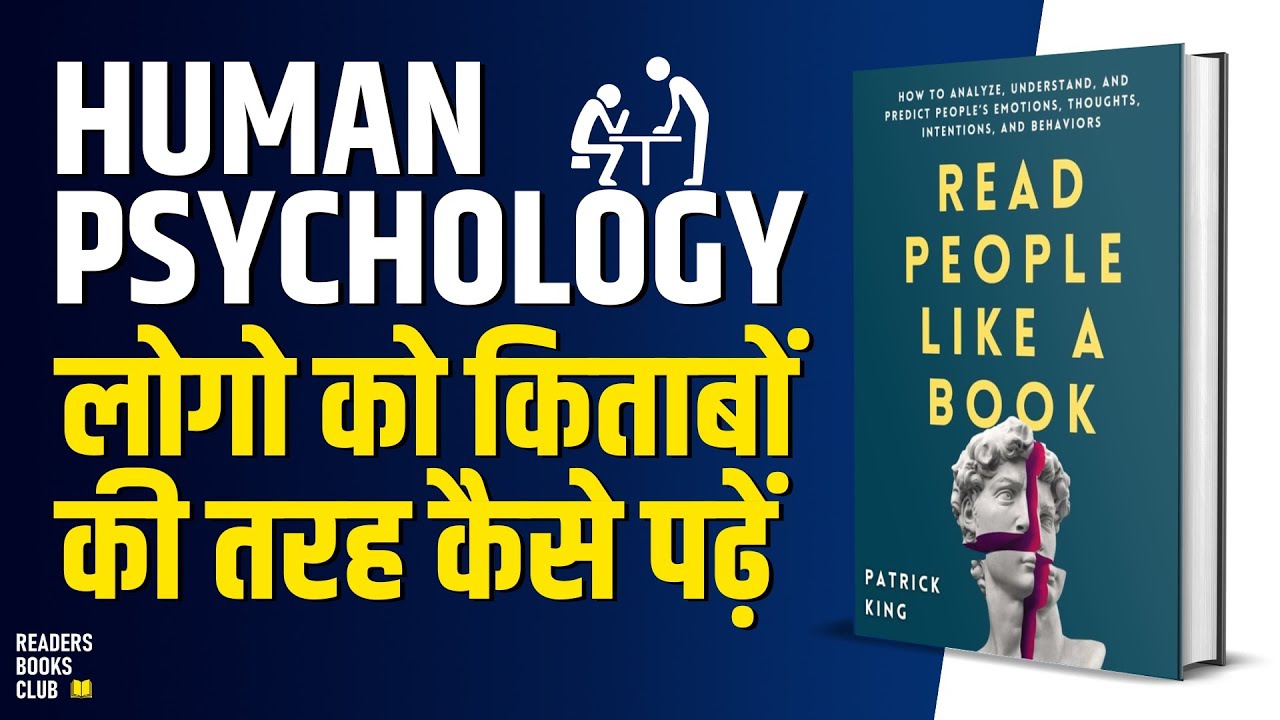10 Top Lessons from the Book "Read People Like a Book" by Patrick King
Summary
TLDRThe book 'Read People Like a Book' by Patrick King offers ten key insights for understanding others better. These include observing non-verbal cues, practicing active listening, developing empathy, and recognizing behavioral patterns. It also emphasizes understanding personality types, asking open-ended questions, and being aware of personal biases. Readers are encouraged to adapt their communication style to different individuals and to cultivate observation skills. The author highlights the importance of patience and practice in mastering the ability to read people accurately over time.
Takeaways
- 😀 Pay attention to non-verbal cues: Body language, facial expressions, and tone of voice can reveal a lot about a person's thoughts and feelings.
- 👂 Actively listen: Effective communication requires listening closely, showing interest, and asking clarifying questions to understand others better.
- 💗 Develop empathy: Empathy allows you to understand and share others' feelings, improving your ability to interpret emotions.
- 🔄 Look for patterns: Human behavior often follows patterns; by recognizing these, you can gain insights into people's motivations and thought processes.
- 👥 Understand personality types: Knowing different personality types like Myers-Briggs and the Big Five helps in recognizing and understanding individuals better.
- ❓ Ask open-ended questions: These encourage detailed, meaningful answers, helping you gather more information about the person.
- 👀 Practice active observation: Actively observe people's actions, reactions, and interactions in various situations to improve your reading accuracy.
- 🔍 Be aware of your biases: Recognizing your own biases allows you to approach others with an open mind and read them more objectively.
- 💬 Adapt your communication style: Adjusting your communication to match others' styles enhances understanding and trust.
- ⏳ Have patience and practice: Developing the skill of reading people takes time and continuous practice.
Q & A
What is the significance of paying attention to non-verbal cues?
-Non-verbal cues such as body language, facial expressions, and tone of voice can reveal a person's thoughts and feelings, helping you understand them better.
Why is active listening important in communication?
-Active listening shows interest, helps clarify the speaker's perspective, and builds stronger connections by encouraging deeper understanding.
How can developing empathy improve your ability to read people?
-Empathy allows you to put yourself in someone else's shoes, which helps in understanding their feelings and experiences, improving emotional interpretation.
Why should one look for patterns in human behavior?
-Recognizing patterns in behavior can provide insight into a person's motivations, preferences, and thought processes, making it easier to predict their actions.
How do personality types help in understanding others?
-By learning about different personality types, such as the Myers-Briggs Type Indicator (MBTI) or Big Five traits, you can better understand and relate to individuals.
What is the value of asking open-ended questions?
-Open-ended questions encourage more detailed and meaningful responses, providing deeper insights into a person's thoughts and feelings.
How does active observation help in reading people?
-Active observation of people's actions, interactions, and reactions in various situations improves your ability to accurately assess and understand them.
Why is it important to be aware of your own biases when reading people?
-Biases can cloud judgment and lead to misinterpretation. Being aware of them allows for more objective and accurate reading of others.
How can adapting your communication style improve interactions?
-Adapting your communication style to match the other person's improves understanding and trust, fostering better communication.
Why is patience important when learning to read people?
-Reading people is a skill that takes time and practice to develop, so patience is key to improving observation and interpretation over time.
Outlines

Esta sección está disponible solo para usuarios con suscripción. Por favor, mejora tu plan para acceder a esta parte.
Mejorar ahoraMindmap

Esta sección está disponible solo para usuarios con suscripción. Por favor, mejora tu plan para acceder a esta parte.
Mejorar ahoraKeywords

Esta sección está disponible solo para usuarios con suscripción. Por favor, mejora tu plan para acceder a esta parte.
Mejorar ahoraHighlights

Esta sección está disponible solo para usuarios con suscripción. Por favor, mejora tu plan para acceder a esta parte.
Mejorar ahoraTranscripts

Esta sección está disponible solo para usuarios con suscripción. Por favor, mejora tu plan para acceder a esta parte.
Mejorar ahoraVer Más Videos Relacionados

Read People Like a Book by Patrick King Audiobook | Book Summary in Hindi

PERTANDINGAN BICARA BUKU PERINGKAT NEGERI SELANGOR 2023 : BAHASA MELAYU SEKOLAH MENENGAH

Pentingnya Pendidikan: Membebaskan Pikiran dan Kreasi Diri - Maudy Ayunda's Booklist (Educated)

Kunci dari Ide-Ide Cemerlang?! Maudy Ayunda's Booklist

Rich Dad Poor Dad Book Summary | 6 Rules of Money

Menjadi Cerdas Emosional | Emotional Intelligence 2.0
5.0 / 5 (0 votes)
